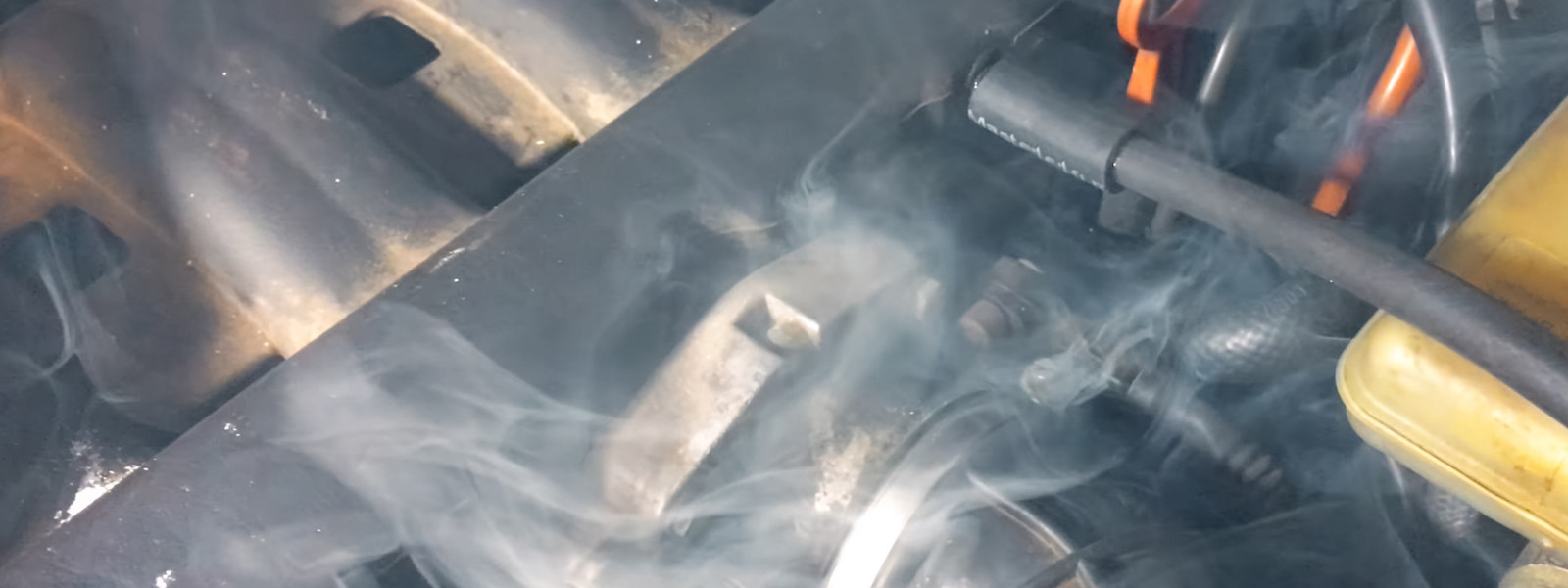Everything You Need to Know about Jaguar Overheating

Apart from exhaust emissions, excess heat is among the best-known side effects of internal combustion engines operating in your vehicle. This heat comes from igniting the mixture of fuel and air inside the combustion chambers at a rate of thousands of times per minute. In most cases, this heat is good, since it warms up the engine as a whole, reduces wear, and provides heating for the cabin.
However, what happens when the motor cannot cope with the amount of heat it produces? This is called overheating, and it is a common problem among all kinds of cars. It is therefore important to be able to determine the early signs of your Jaguar starting to overheat, the common reasons for this malfunction, and what to do in this case.
Signs Your Jaguar Has Overheated
Even before you see smoke coming from your radiator, the car will alert you with a notification on the dashboard that your engine temperature is past the normal range. When it comes to Jaguar cars, the standard working temperature is between 160 to 170 Fahrenheit, or 70 to 90 degrees Celsius. When this notification appears, the vehicle isn't overheated yet, but it will be if you ignore it and continue driving and generating heat. The check engine light might come on if the engine is close to overheating, since the engine's sensors will detect that something is wrong.
The next step is white smoke and steam coming from the engine bay, noticeable loss of power, and coolant leaking from your engine. You might hear strange noises such as ticking, along with the pungent smell of boiling coolant and burning plastic, which are all signs that the temperature in your engine is over the limit.
Why Do Jaguar Engines Overheat?
There are several common reasons why Jaguar engines overheat. The car cooling system is relatively straightforward and can perform flawlessly for years, but sometimes, it can be flawed by mechanical issues that result in overheating.
1. Engine Coolant System Issues
Whenever part of the cooling system is broken or malfunctioning, overheating is usually the result. Whether it is the water pump, clogged coolant lines, busted hoses, or a damaged radiator, the engine will not be cool enough, and will start raising its temperature.
2. Coolant Leaks
Most cases of overheating come from a lack of coolant in the cooling system. The engine of your Jaguar cannot be cooled if the radiator is empty. It is therefore imperative to check the coolant levels every once in a while, and in the case of older cars, you can do this by opening the radiator cap, but only when the engine is cold. For newer models, access the menu on your board computer, which will tell you the required information in a matter of seconds. However, if you find puddles of coolant underneath your car, this means that overheating will be an issue if you start driving. A couple of drops means that a hose is probably leaking, but a big puddle means that you have a serious problem on your hands.
3. Expansion Tank Cracking
The expansion tank is a crucial part of a car's cooling system. When liquid (the coolant) is heated, it expands in volume, and the expansion tank is designed to keep the coolant while the engine runs. Expansion tanks are made of high-strength plastic, designed to withstand temperature oscillations. However, over time, expansion packs are known for cracking and leaking. When your car is cold, there will be no leaks from the tank, but once the Jaguar's engine reaches a working temperature, the coolant will expand to the tank and leaks will start. It is therefore important to check for leaks while the engine is running.
4. Thermostat Failure
The thermostat is one of the most crucial parts of Jaguar's cooling system. This simple mechanical device is mounted on the radiator and serves as a regulator of coolant circulation. If it is broken, the flow of coolant will be reduced, the engine's temperature will rise, and in some cases, the engine will have a hard time reaching the optimal temperature.
What to Do If Your Engine Is Overheating
Since overheating is a relatively common issue across all vehicles, it is helpful to know what to do when you encounter it. When engine temperatures rise, you are usually still far from overheating, but this is an issue that will require attention. Do not drive far or fast, and monitor the temperature - if it continues to climb, you should pull away and either allow the engine to cool down or call for help.
However, if the engine has overheated, the best thing to do is immediately park the car in a safe area and shut down the engine. Do not attempt to open the radiator cap, since you can get injured by steam and boiling coolant. Call for help, and do not drive the vehicle until the issue is sorted.
How to Prevent Overheating Problems
Proper and timely maintenance is the best way to fight overheating your Jaguar. A lot of coolant system issues can be prevented if you take care of your vehicle and get it checked by trusty specialists who are able to see early signs of expansion tank cracking, failing hoses, or coolant leaks.
As well-known Jaguar specialists, we at Westminster Motors know these cars inside and out, and we have seen and repaired all types of overheating issues. Our team of experienced mechanics will repair any cooling problem you may be facing and thoroughly check your Jaguar for any signs of potential issues. Reach out to us with any questions or concerns you may have, and we will gladly help you.